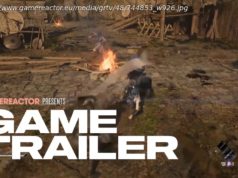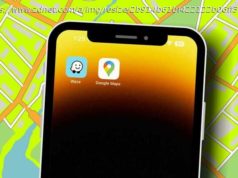Devs around the industry (including Nina Freeman, Kevin Snow, and Claire Hummel) reflect on how the venerable virtual pet website helped jumpstart the
Websites designed in the ’90s may look rudimentary and simple compared to those built today, but a lot of hard work went into creating a domain.
Hardware was also relatively expensive during the infancy of the Internet— families who could afford a single desktop computer usually delegated it to one section of the home. Because of this arrangement, kids usually had a limited amount of time to surf the web before having to log off.
So what was there to do online? Between playing Minesweeper or doodling in Microsoft Paint, many game developers who grew up with the Internet spent the bulk of their allotted time exploring Neopets, the virtual pet website launched in 1999 that grew to be so much more.
For Nina Freeman, a level designer at Fullbright and developer of the Internet-inspired Cibele and Lost Memories Dot Net, discovering how to create her own websites within Neopets was crucial to fostering her future in game development.
“I was using Neopets as a tween back in the early 2000s. I was super into their whole guild community, and discovered web design and coding through that space,” she explains.
Guilds housed players under a central theme, becoming a space where they could take part in activities (usually associated with the theme of the guild) and socialize. Oftentimes, guild themes held no relation to Neopets at all and were dedicated to TV shows, movies, and video games.
Creating a guild was a lot like putting together a personalized web page, where users would format and layout their homepage with HTML and develop the aesthetic feel with custom CSS. For Freeman, she used the freedom of creating guilds to her advantage.
“I used to make silly anime graphics in Photoshop and create custom layouts for strangers running guilds to use,” she says, referring to the practice of exchanging website designs for other goods. “We’d all post our layouts for these guilds on forums or sometimes even on our own websites, so that people could download and share them.”
The flexibility guilds offered paved way for many other developers when it came to discovering how to code, since developing a website was (in many ways) the first time they were exposed to the concept of programming.
“This whole scene is what really got me into coding,” Freeman continues. “If I really think about how I got into game development, I think I’d trace my path all the way back to those days spent making guild layouts on Neopets. I really cultivated my love for games.”
Having gone on to experiment with games around Internet culture and forming relationships online, it’s easy to see how the site ended up guiding Freeman’s work.
Discovering that those skills transfer over into game design was pivotal for a number of game developers Gamasutra contacted, including Linden Reid, a programmer at Procedural Reality working on Limit Theory.
“My story with programming and game development starts with Neopets. My first ever experience coding was on Neopets- you could customize your profile page with simple HTML and CSS,” Reid explains.
“I had never coded before because programming looked so intimidating, but the coding in Neopets was so simple and non-threatening and facilitated creative expression,” Reid adds. “I went on to experiment with web development outside of Neopets too, thanks to the foundation of skills I learned from it.”
Reid eventually went on to form a student organization in college called Women in Computer Science, which put together a 48-hour game jam and enlisted the help of industry professionals to volunteer during the event. It turned out that one of the volunteers had actually worked on the creative systems in Neopets that Reid had learned to code with during their adolescence.
“Having a developer who was a part of the reason that I now develop games volunteer at my event has been one of the highlights of my career so far,” said Reid.“I always cite Neopets when people ask me how I got into coding. And because of Neopets, coding has always been a tool for creative expression for me.”
Kevin Snow, a narrative designer currently working on Southern Monsters, has similar thoughts about the accessibility of backend tools helping to shape his technical prowess at an early age.
“I played Neopets from 2001 to 2003 or so and I learned how to write HTML through the customizable homepages and storefronts on Neopets,” Snow says.
Neopets forums were ripe with a community of users eager to help one another out when it came to building these webpages, posting tutorials and tips on how to change the size and style of fonts or get a specific image to load without having it break.
“I started off copying and pasting code, then modifying it, then writing it myself,” he adds.
Snow felt encouraged to seek out solutions through trial and error, browsing through threads online to see how those before him solved an issue and trying it out himself until it worked (or didn’t).
“I feel that teaching myself that skill through online tutorials and troubleshooting was a major help for my art as an adult,” Snow says. “I’ve taught myself how to write C#, CSS, and Javascript, because it made me confident early in my abilities to learn.”
Just like her fellow developers, Sophie Mallinson, a narrative designer at Arkane Studios, agrees that Neopets was her first exposure with HTML and CSS— and by extension, thinking critically about how systems actually worked.
“I was about 9 years old when I joined Neopets,” she says.” It was a pretty rudimentary browser game at the time, with simple, almost naive graphics and a minimalist interface.”
But for Mallinson it was Neopets’ minimalist interface which sparked curiosity and helped foster the desire to create which many developers went on to cultivate through their own work.
“Since most of my actions were just clicking on hyperlinks, this was the first time I felt like I could see the seams and stitches of a game, and the logic behind it wasn’t daunting to me,” Mallinson explains. “Neopets is also where I first learned to use HTML and CSS, designing layouts for guilds and profile pages.”
Having the ability to manipulate code wasn’t the only feature that sparked creativity inside developers— within Neopets was the Neopets Adventure Generator, a tool that worked similar to the choose-your-own adventure engine like Twine.
The product of this generator, appropriately titled “adventures”, were text-based games which included instructions and set the scene for the story a user would embark on. Clicking on links would lead to separate passages, where there were typically one to four options for what to do next. Just like Twine, Neopets Adventure Generator allowed fledgling developers to change font colors to denote different choices, or choose background colors to establish a mood. Perhaps most importantly, it encouraged storytellers to create a compelling beginning, middle, and end.
The Adventure Generator is what independent developer and 3D artist Francesca Carletto-Leon remembers using to create her first game during restricted Internet hours.
“This was the first time I spent time on the internet regularly without the direct supervision of my parents,” Carletto-Leon explains. “Within the Neopets Adventure Generator, I made my first game.”
“I worked tirelessly on a hyperlinked text adventure and then posted it to the void that is the Internet and never thought about it again,” she continues. “I was so proud of it, but it wasn’t something I wanted to show my parents or real-world friends.”
Neopets forums were a space where Carletto-Leon could post her fan art of faeries or publish adventure games with a group of peers engaged in the same activities and interests she had. Being able to share her work with other anonymous denizens of the Internet had a big impact on her career as a game maker.
“I now make games, a lot of them narrative-driven, about my life and experiences hoping that others will find in me what I found on Neopets; validation that we all have stories worth sharing,” says Carletto Leon.
Mallinson echoes the impact Neopets’ forums had, attributing them with helping her understand the impact of telling stories solely through text.
“When I wasn’t busy feeding omelettes to my pets, I was on the Neopets forum, learning to write through text-based role-playing. Some of these role-playing threads would last for weeks,” she says.”
“About a decade later, I started using Twine, a tool that lets your create interactive fiction in the form of web pages.”
“I feel like my experience with Neopets helped me understand the potential of hypertext for telling stories, and how evocative text-based video games could be,» she adds. “Twine was my first foray into A-to-Z game development, and is one of the reasons I’m working in games today.”
Gabby DaRienzo, an artist and game developer from Toronto known for A Mortician’s Tale, also cites the Adventure Generator as being influential to her career as a game developer.
“Neopets had a very basic, Twine-lite ‘choose your own adventure’ game making system, and I would often write elaborate stories and make my own games through it,” DaRienzo explains. “My text-based, choose-your-own-adventures were some of my very first games, and subsequently got me interested in both game development and also narrative design.”
It’s no surprise that Neopets became a platform for people to socialize, using forums to post threads and commenting on each other’s work or simply reaching out based on common shared interests to form bonds.
The accessibility of the Internet meant that developers could log on and instantly befriend like-minded individuals, preparing them for eventually interacting on social media platforms to promote their work and become comfortable putting themselves out there.
Neopets was especially crucial for developers like Snow, who relies on online communities for work and collaboration.






